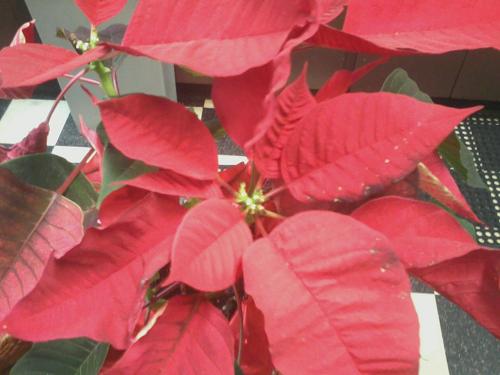Just three weeks after Christmas, many of us are already wondering what to do with poinsettias, cyclamens, Christmas cacti, hollies and living Christmas trees. Christmas cacti and hollies are perhaps the easiest of these to accommodate. Christmas cacti do not even need to leave the home as their flowers eventually deteriorate, since they are happy as foliar houseplants or potted on sheltered porches, and with good sun exposure, will bloom annually. Hollies make handsome shrubbery where their prickly foliage will not be a problem. Since some hollies get quite large, and others stay low and compact, it is helpful to know which variety any particular holly plant is.
Cyclamens are popular as cool season bedding plants as well as blooming potted plants. Gardeners typically dispose of those grown as bedding plants as if they were mere annuals. However, they are actually cool season perennials that go dormant through summer. If they are not in the way of warm season annuals in spring, and are among other plants that will cover for them during their dormancy, they can be left in the garden to regenerate and bloom again next winter. Individual potted plants that get too tired to be appealing in the home can be retired to partly shaded shallow ground cover or mixed perennials for a bit of winter color.Poinsettias are a bit more complicated, which is why so many people simply discard them as they slowly lose their color after Christmas. They can keep their color for many months, and be happy as houseplants, but rarely bloom again in the home once their first bloom is gone. Alternatively, they can be planted into sheltered and partly shaded spots in the garden after frost. Through summer, they develop taller scrawny stems that bloom early in January or so. (Yes, they bloom ‘after’ Christmas.) They are sensitive to frost, so like to be under eaves.Of all the popular potted plants associated with Christmas, living Christmas trees are the most problematic, not because they are difficult to care for, but because they so often get planted in bad situations. Only the compact conifers, like spruces, junipers and Scots pines, can stay potted to function as Christmas trees for a few years or more. Almost all other pines grow too vigorously to be happy for long in containers. After Christmas, they should instead get their circling roots severed, and then be planted into the garden.The problem is that most living Christmas trees are Italian stone pines or Canary Island pines, each of which gets much too large for confined garden spaces. If there is not enough space for such a tree to grow to maturity without causing trouble, it best to find another home for it, or to discard it when it outgrows containment.flower of the week: poinsettiaThe tiny, yellow buds at the center of poinsettia (Euphorbia pulcherrima) blooms are actually the unimpressive flowers. The colorful red, white, pink or rarely pale orange bracts surrounding these flowers are merely colorful leaves. Some varieties have marbled, blotched or spotted bracts. Compact potted plants that are mostly less than two feet tall and broad can get quite lanky and taller than ten feet in the garden. The dark green leaves are about three to five inches long.








